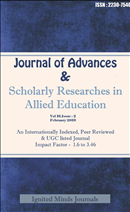Tragic Vision of Eugene O’Neill
Exploring Eugene O'Neill's Tragic Vision
Keywords:
Eugene O'Neill, tragic vision, influence, Greek tragedy, ShakespeareAbstract
Eugene O’Neill’s tragic vision is largely based on his influence from such great writers as Sophocles, Aeschylus, Euripides, Dante, Shakespeare, Marlowe, Cervantes, Melville, Tennessee Williams, Kafka, Camus, Samuel Beckett, and others. In order to have an explicit idea of what O’Neill’s conception of tragic vision is based on, we shall first know the origin of the concept of tragedy. In his book The Birth of Tragedy, Nietzsche brought forth his conception of tragic vision in the form of two energiesforces-- Dionysian and Apollonian. O’Neill’s tragic vision is often said to be the product of his ill health, his habitual alcoholic brother, Jamie, and the uncaring attitude of his mother during the early period of his life. O’Neill’s Long Day’s Journey into Night is a perfect example of it. O’Neill tried to adapt Greek tragedy into a twentieth century model. One very important aspect of O’Neill’s tragic vision is the conception that the mysterious structure of man’s mind itself is responsible for its tragedy. In his search for identity, man moves out in society and confronts problems. In The Hairy Ape, Yank’s mind is all split up as a result of the “inner-outer” struggle, which threatens his very existence. The evolution of tragic vision in O’Neill’s plays seems to be similar to that of Shakespeare’s, both of whom followed the pattern adopted by Dante in his Divina Commedia, and both employed double vision lending a complexity to the characters and themes coupled with the typical tragic quest for happiness and fulfillment As is cited by R. R. Khare in his book, Eugene O’Neill and His Visionary Quest, we have three kinds of tragic plays in both Shakespeare and O’Neill. O’Neill’s characters are sustained by pipe-dreams Shakespeare’s characters are haunted by dreams more complex and tragic. According to O’Neill, the significance of tragedy lies in its ability to produce truth which is essentially beautiful and which in turn gives meaning to hope and life. This very idea of truth finds its fullest expression in almost all his tragic plays which, according various critics, enshrined in them a highly pessimistic view of life making his tragedies an outcry of sordid and depressing view of life. So the search for the lost identity as in case of Yank in The Hairy Ape and the pipe-dreams as in the case of all the bums of Harry Hope’s Saloon in The Iceman Cometh give us power to willing-living in the sordid world of harsh and unbearable realities of life where illusive hope and hope against hope can sustain life which in turn constitute the very thrust of almost all the tragic plays of O’Neill making his plays a deep, profound and comprehensive study of his tragic vision.Published
2019-02-01
How to Cite
[1]
“Tragic Vision of Eugene O’Neill: Exploring Eugene O’Neill’s Tragic Vision”, JASRAE, vol. 16, no. 2, pp. 882–885, Feb. 2019, Accessed: Dec. 25, 2025. [Online]. Available: https://ignited.in/index.php/jasrae/article/view/10240
Issue
Section
Articles
How to Cite
[1]
“Tragic Vision of Eugene O’Neill: Exploring Eugene O’Neill’s Tragic Vision”, JASRAE, vol. 16, no. 2, pp. 882–885, Feb. 2019, Accessed: Dec. 25, 2025. [Online]. Available: https://ignited.in/index.php/jasrae/article/view/10240











